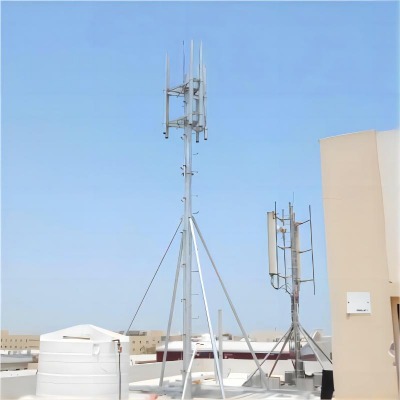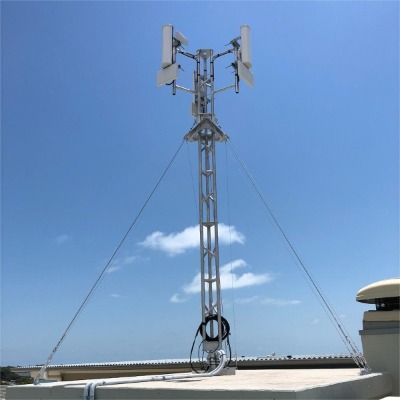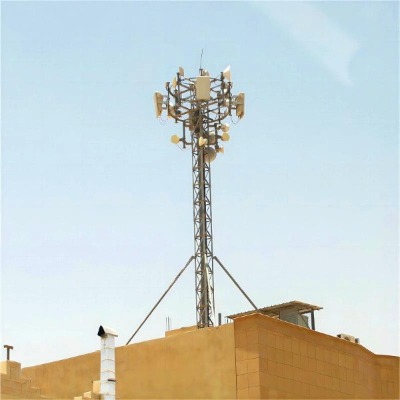The Advantage of Roof-top Tower
Roof-top towers, also known as roof-mounted or rooftop cell towers, offer several advantages in the telecommunications industry. Here are some of the key benefits of roof-top towers:

1. Space Efficiency: Roof-top towers utilize existing infrastructure by mounting antennas and telecom equipment on rooftops, maximizing the use of available space. They eliminate the need for additional ground space, making them an ideal solution for urban areas or locations with limited land availability.
2. Improved Coverage: Placing antennas at higher elevations on rooftops can enhance signal coverage and quality. The elevated position helps overcome obstacles such as buildings or terrain, allowing signals to propagate more effectively and reach a wider area.
3. Cost Savings: Utilizing rooftops for cell tower installations can be cost-effective compared to constructing new freestanding towers. There are often reduced costs associated with land acquisition, site preparation, and tower construction, as the existing building structure provides support.
4. Reduced Visual Impact: Roof-top towers are generally less visually obtrusive compared to freestanding towers. By integrating the cell tower into existing buildings or structures, they blend more seamlessly into the surrounding urban or suburban environment, minimizing visual impact.
5. Faster Deployment: Roof-top towers can be deployed more quickly compared to building new towers from scratch. As the building is already in place, the installation process typically involves mounting antennas, equipment, and associated infrastructure on the rooftop, reducing construction and permitting time.

6. Enhanced Security: Roof-top towers can benefit from the security measures already in place for the building, such as access controls, surveillance systems, and physical barriers. This can help protect the telecommunications equipment from theft, vandalism, or unauthorized access.
7. Improved Signal Strength and Quality: Roof-top towers often provide better line-of-sight conditions, which can result in improved signal strength and quality. By being higher above ground level, they can minimize signal interference, multipath propagation, and other factors that may degrade signal performance.
8. Network Densification: In densely populated areas, deploying roof-top towers allows for network densification. By strategically locating cell towers on numerous rooftops, service providers can enhance network capacity, accommodate increasing data demands, and improve overall network performance.
9. Regulatory Compliance: Roof-top towers often face fewer regulatory challenges compared to constructing new towers. They may benefit from existing permits, zoning regulations, and building codes that apply to the building itself, simplifying the approval process.
10. Future Expansion and Upgrades: Roof-top towers offer flexibility for future expansion and technology upgrades. As the telecommunications industry evolves, additional equipment or antennas can be easily installed or replaced on the rooftop to support new technologies or increased capacity.

It's important to note that the suitability of roof-top towers depends on factors such as building structure, load-bearing capacity, electromagnetic compatibility, and local regulations. Engaging with structural engineers, building owners, and telecommunications professionals is crucial to ensure proper installation, structural integrity, and compliance with regulations.
.jpg)
评论
发表评论